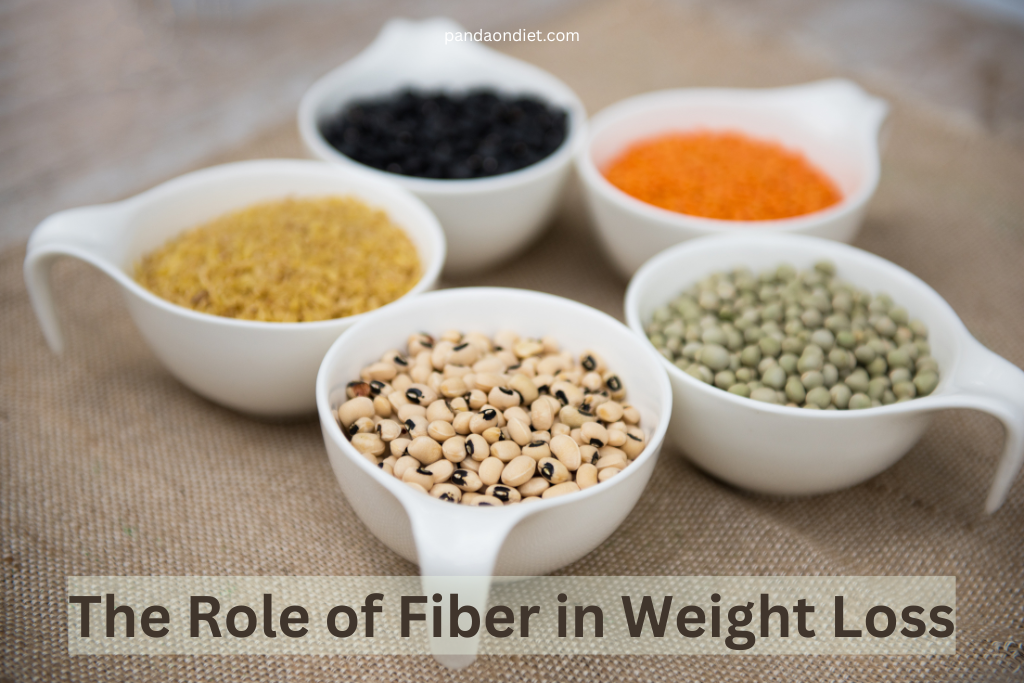When it comes to weight loss, fiber plays a vital role that is often underestimated. Unlike other nutrients that provide energy or build muscle, fiber is a type of carbohydrate that the body can’t digest. It passes through the digestive system relatively intact, offering numerous health benefits, particularly in weight management.
This article will explore the importance of fiber, the different types of fiber, and how they contribute to effective weight management.
Understanding Fiber
Fiber is found in plant-based foods such as fruits, vegetables, whole grains, and legumes. It is classified into two main types: soluble and insoluble fiber.
Each type has unique properties and benefits, especially when it comes to weight loss.
- Soluble Fiber
This type of fiber dissolves in water to form a gel-like substance in the digestive tract. Soluble fiber helps slow down digestion, making you feel fuller for longer periods.
This effect is crucial for weight loss because it reduces the likelihood of overeating. Foods rich in soluble fiber include oats, barley, apples, oranges, carrots, and beans.
- Insoluble Fiber
Unlike soluble fiber, insoluble fiber does not dissolve in water. Instead, it adds bulk to the stool and helps food pass more quickly through the stomach and intestines.
Insoluble fiber is essential for maintaining regular bowel movements and preventing constipation. This type of fiber can be found in whole grains, nuts, seeds, and the skins of fruits and vegetables.
The Importance of Fiber in Weight Loss
Fiber’s unique characteristics make it a powerful tool for those looking to lose weight. Here are some of the key ways in which fiber supports weight loss:
- Enhances Fullness
Fiber-rich foods are known for their ability to keep you full longer. Soluble fiber, in particular, forms a gel in the stomach that slows down digestion.
This prolonged digestion time means you are less likely to feel hungry soon after eating, reducing the chances of snacking on unhealthy foods between meals.
- Reduces Caloric Intake
Foods high in fiber often require more chewing, which slows down eating and gives your body more time to signal that you are full.
This natural regulation helps prevent overeating and reduces overall caloric intake, which is essential for weight loss.
- Regulates Blood Sugar Levels
Soluble fiber helps stabilize blood sugar levels by slowing down the absorption of sugar into the bloodstream.
Stable blood sugar levels are crucial for preventing sudden spikes in insulin, which can lead to fat storage and weight gain.
- Supports Digestive Health
A healthy digestive system is key to effective weight management. Insoluble fiber adds bulk to the stool and promotes regular bowel movements, preventing bloating and constipation.
A well-functioning digestive system helps the body eliminate waste and excess fat more efficiently.
- Lowers Cholesterol Levels
Soluble fiber has been shown to reduce bad cholesterol (LDL) levels by binding to cholesterol in the digestive system and preventing its absorption.
Lower cholesterol levels are not only good for heart health but also support a healthy metabolism, which is important for weight loss.
Types of Fiber for Effective Weight Management
Incorporating a variety of fiber types into your diet can optimize your weight loss efforts. Here are some key sources of soluble and insoluble fiber:
Soluble Fiber Sources
- Oats
Oats are a great source of soluble fiber called beta-glucan, which has been shown to reduce appetite and improve metabolic health.
- Beans and Lentils
These legumes are rich in soluble fiber and protein, making them ideal for promoting fullness and reducing overall calorie intake.
- Citrus Fruits
Oranges, grapefruits, and other citrus fruits provide soluble fiber, which can help manage appetite and support weight loss.
Insoluble Fiber Sources
- Whole Grains
Whole grains like brown rice, whole wheat, and quinoa are excellent sources of insoluble fiber, which supports healthy digestion and regular bowel movements.
- Vegetables
Leafy greens, broccoli, and other vegetables provide insoluble fiber that adds bulk to your diet and aids in digestion.
- Nuts and Seeds
Almonds, flaxseeds, and chia seeds are packed with insoluble fiber, which helps keep you full and promotes healthy digestion.
Tips for Increasing Fiber Intake
If you’re looking to increase your fiber intake to support weight loss, here are some simple tips:
- Start Your Day with Fiber
Begin your day with a high-fiber breakfast, such as oatmeal topped with fruits and nuts, to keep you full throughout the morning.
- Snack on Fiber-Rich Foods
Choose fiber-rich snacks like raw vegetables, fruits, or a handful of nuts to curb hunger between meals.
- Include Fiber in Every Meal
Incorporate both soluble and insoluble fiber sources in each meal. For example, pair a leafy green salad (insoluble fiber) with beans or lentils (soluble fiber).
- Drink Plenty of Water
Fiber works best when you stay hydrated. Drinking enough water helps fiber move smoothly through the digestive system and prevents constipation.
- Increase Fiber Gradually
If you’re not used to eating a lot of fiber, increase your intake gradually to prevent digestive discomfort. This allows your body to adjust and benefit fully from the added fiber.
FAQs
What is the difference between soluble and insoluble fiber?
Soluble fiber dissolves in water to form a gel-like substance that slows down digestion, helping you feel fuller for longer. Insoluble fiber does not dissolve in water; instead, it adds bulk to the stool, promoting regular bowel movements and preventing constipation.
How does fiber help with weight loss?
Fiber aids weight loss by enhancing feelings of fullness, reducing overall caloric intake, regulating blood sugar levels, supporting digestive health, and lowering bad cholesterol levels. These factors contribute to more effective weight management.
What are some good sources of fiber for weight loss?
Excellent sources of fiber include oats, beans, lentils, citrus fruits (for soluble fiber), whole grains, leafy greens, and nuts (for insoluble fiber). Incorporating these foods into your diet can help you achieve your weight loss goals.
How much fiber should I eat daily for weight loss?
The recommended daily intake of fiber varies depending on age and gender, but generally, adults should aim for 25-30 grams of fiber per day. Gradually increasing your fiber intake can help prevent digestive discomfort.
Can increasing fiber intake cause any side effects?
While fiber is beneficial, a sudden increase in fiber intake can cause digestive issues like bloating, gas, and constipation. It’s important to increase fiber gradually and drink plenty of water to help your body adjust.
Final Words
Incorporating more fiber into your diet is a simple and effective way to support weight loss. By understanding the different types of fiber and their roles in digestion, fullness, and overall health, you can make informed choices that help you achieve your weight loss goals. Remember, a balanced diet rich in fiber, combined with regular exercise and healthy lifestyle habits, is key to long-term success in weight management.

